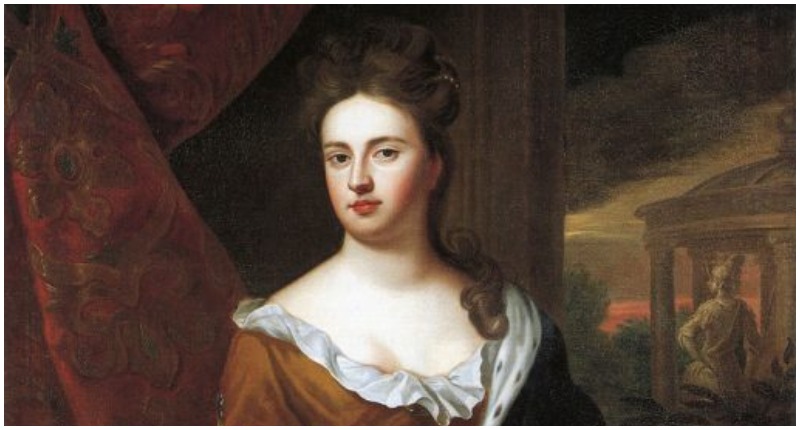The new film The Favourite, winning favorable reviews and earning award nominations, shows a Queen Anne who doesn’t seem up to the job of ruling a country. As portrayed by Olivia Colman, the Queen is weak, uncomprehending, irrational, and obsessed with her female ladies-in-waiting.
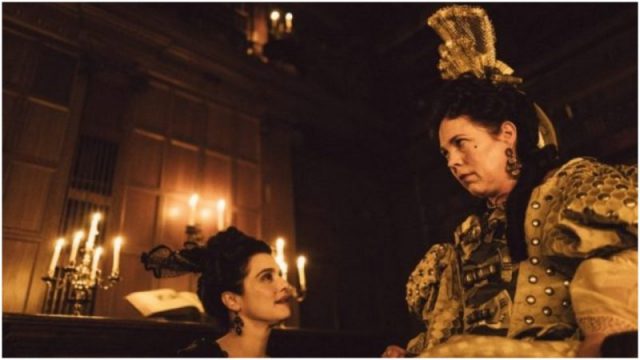
Photo by Yorgos Lanthimos. © 2018 Twentieth Century Fox
Historians are debating the accuracy of the film’s depiction, with some pointing out that Queen Anne was a stalwart supporter of the Anglican Church and is recorded as attending more cabinet meetings than any other monarch before her.
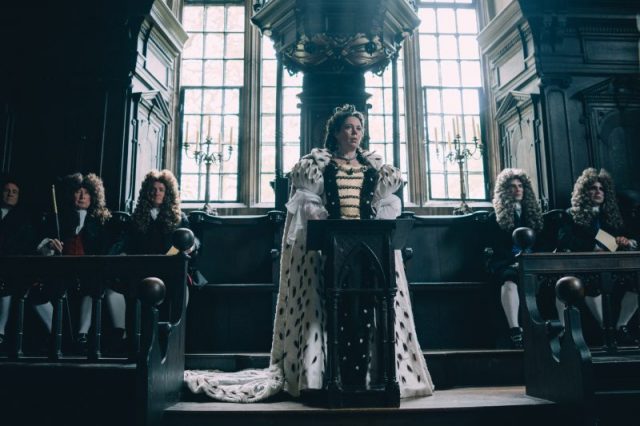
However, there is no question that at her birth and throughout her childhood, no one expected Anne to one day ascend the throne of England.
She was born on February 6, 1665 in St. James Palace, the fourth child of James, Duke of York, and his first wife, Anne Hyde. James was the younger brother of Charles II, who brought back the Stuart dynasty in the Restoration.
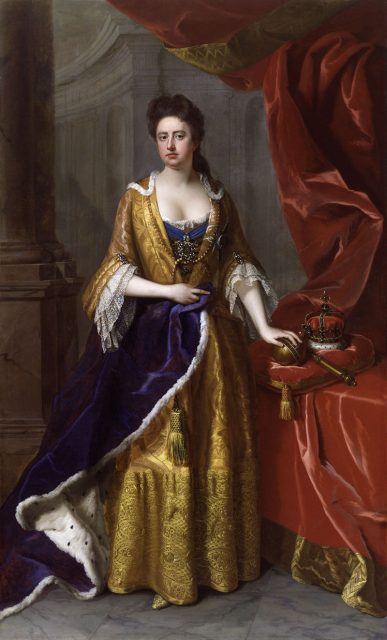
In 1665, there were many people positioned in front of Anne. Everyone expected King Charles, who had already fathered illegitimate children, to produce legitimate heirs to the throne with his bride, Catherine of Braganza.
Anne’s mother was not royal. She was the daughter of Edward Hyde, a lawyer who had become a key adviser to Charles Stuart before he returned to the throne.
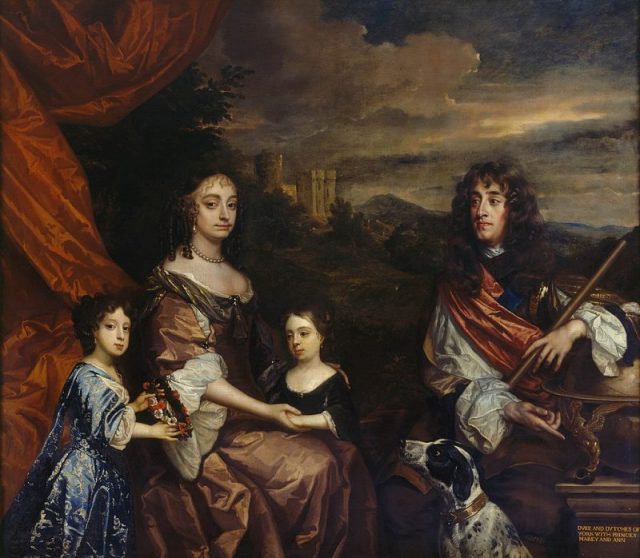
James and Anne had a secret love affair while the Stuarts were in exile in the Netherlands. He married her when she became pregnant, but the marriage was a scandal and for a time James abandoned her. His brother Charles insisted that since the marriage was legal, it should stand.
James returned to his wife and they had quite a few children, although he was constantly unfaithful too.
Their daughter Anne was born after Charles became King of England. Although she grew up wanting for nothing, living in grand houses and palaces, Anne was not treated as terribly important.
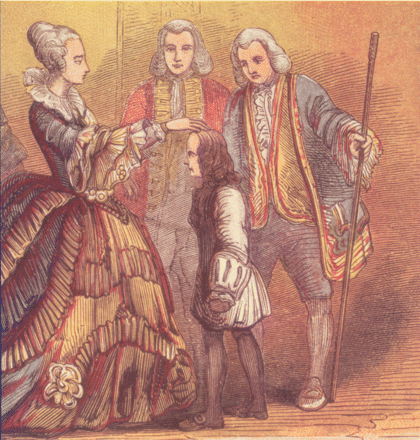
Her mother died when she was six, and her father remarried, picking a very young woman. His sons had died young and he was intent on having a male heir.
Anne’s education was definitely not intended to prepare her for a serious role in government. However, she did have a talent and great interest in the arts.
“She was a competent performer on the guitar and the harpsichord, an excellent dancer and actress in her youth, a fluent speaker of French, a promoter of opera, a shrewd connoisseur of painting and architecture, an experienced judge of political and religious oratory, and a reader able to quote contemporary poets from memory,” wrote James Anderson Winn in Queen Anne: Patroness of the Arts.
By the time Anne had reached marriageable age, it was recognized that she was growing in importance. Charles II had had no children. James Duke of York had not yet had a son with his second wife.
Anne’s older sister, Mary, dominated the family. She’d married her first cousin, William of Orange, an important Protestant ruler. However, they didn’t have any children.
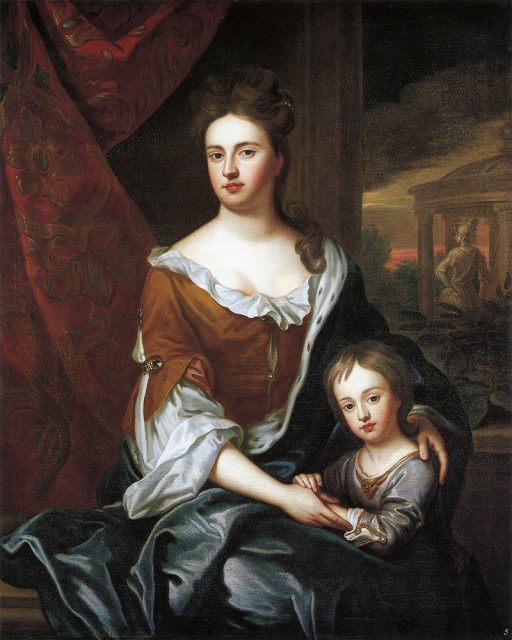
And so it was recognized that there was a lack of heirs to the Stuart dynasty. Everyone hoped that Anne’s arranged marriage to Prince George of Denmark would prove not only happy but fruitful.
The couple’s marriage is believed to have been a compatible one. But it is a terrible tragedy that Anne was pregnant 17 times, yet only one child, a boy, lived past infancy, and he died at age 11. The repeated miscarriages, stillbirths, and losses wreaked havoc with her health. On top of that, Anne developed a serious case of gout.
Charles II died in 1685, and his younger brother, James, succeeded as James II. His reign was a disaster. James and his second wife, Mary of Modena, were Catholics in a country that was not only Protestant but hostile toward Catholics. His wife had a son, and that made them more of a threat to Parliament.
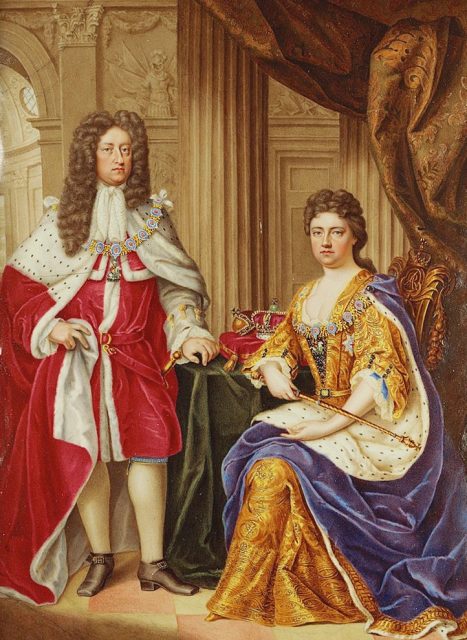
After three years, James was deposed in favor of his oldest daughter and her husband. William and Mary became the co-rulers of England. Anne, a devout Protestant, sided with her sister rather than her father, which shocked and upset him. “God help me, even my children have deserted me,” he said.
However, Anne and her sister Mary were not close during this time either. One of the reasons: Anne was emotionally dependent on her chief lady in waiting, Sarah Churchill, a friend of hers since they were children, and Mary did not approve of their dominance. Sarah and her husband, John Churchill, Duke of Marlborough, advised Anne on everything.
Still, William and Mary were not old. Anne was technically their heir, but circumstances did not seem to favor her acceding soon, if at all. Anne, her husband, the Churchills, and others loyal to her formed their own court away from William and Mary.
Fate took a hand again. Mary died of smallpox at age 32. William died several years later, after a riding accident.
Anne became the next ruler of England in 1702, the first queen to rule in her own name since Elizabeth I.
Although she was shy, poorly educated, unsure of herself, and in great pain from gout, Anne went through all of the coronation ceremonies and even addressed the House of Lords, saying, “I can very sincerely assure you, that there is not anything you can expect or desire from me which I shall not be ready to do for the happiness and prosperity of England.”
Afterward, an eyewitness said, “Never any woman spoke more audibly or with better grace.”
The unlikely reign of Queen Anne had begun.
Nancy Bilyeau, a former staff editor at Entertainment Weekly, Rolling Stone, and InStyle, has written a trilogy of historical thrillers for Touchstone Books. Her new book, The Blue, is a spy story set in the 18th-century porcelain world. For more information, go to www.nancybilyeau.com
